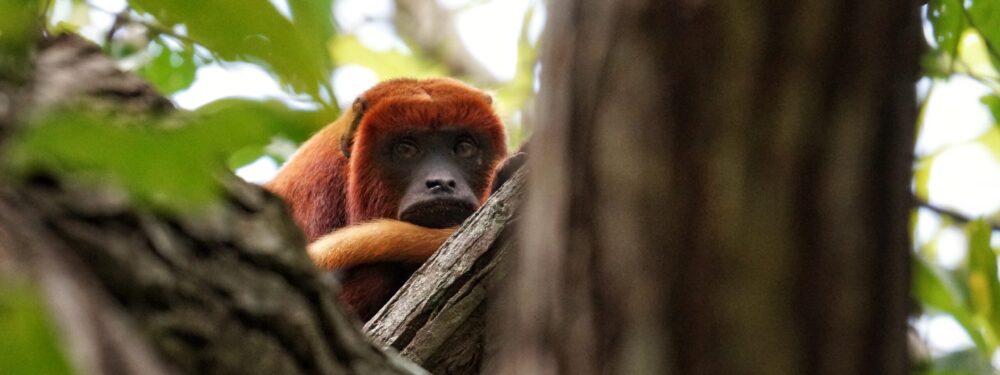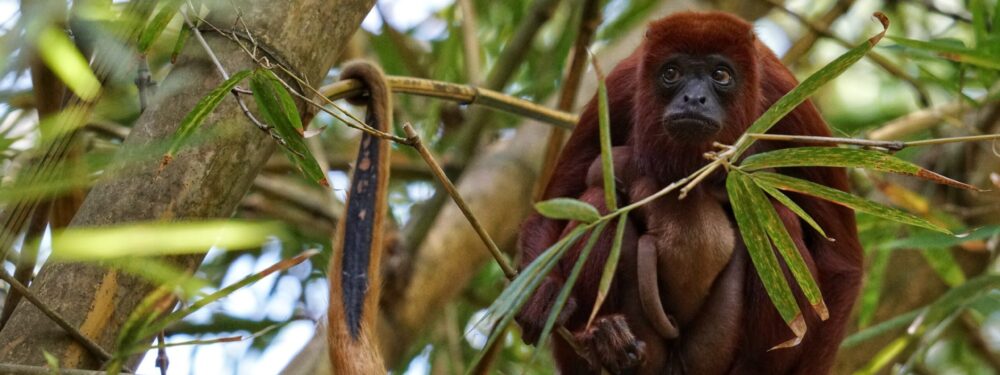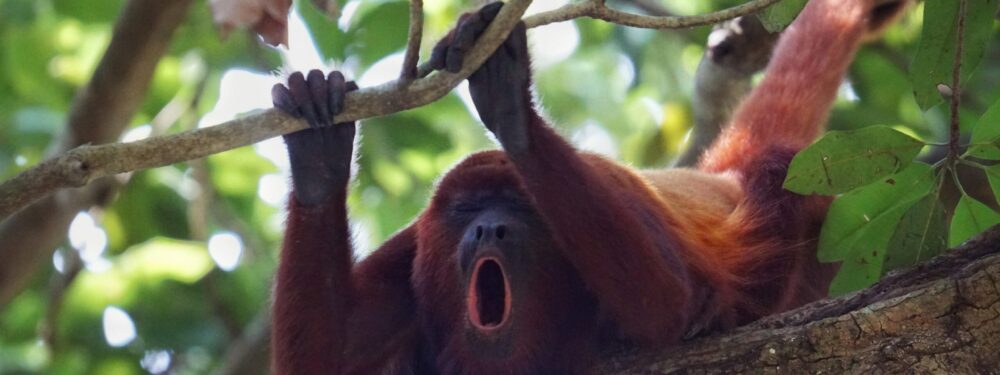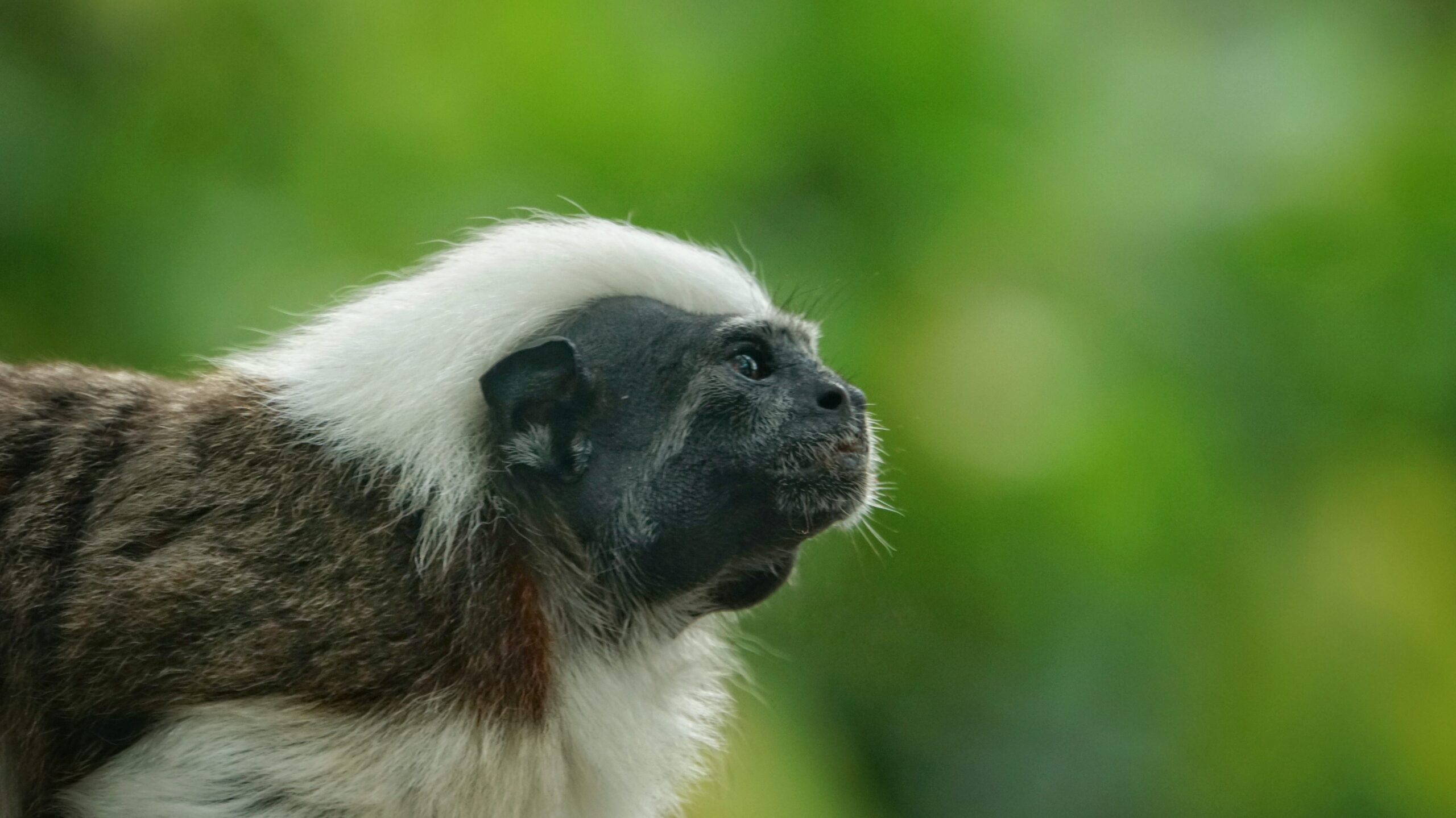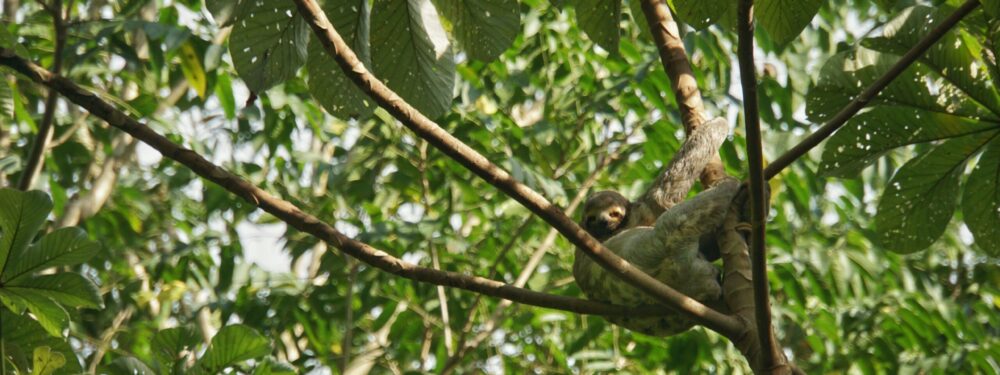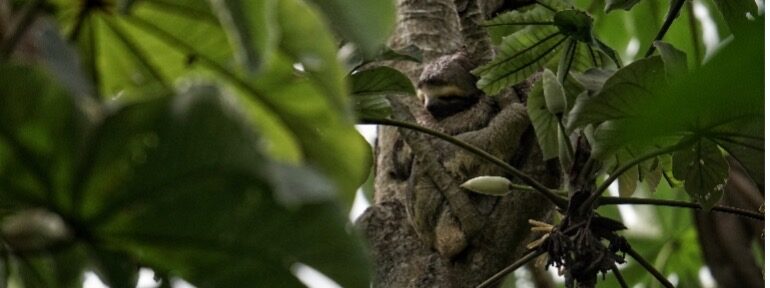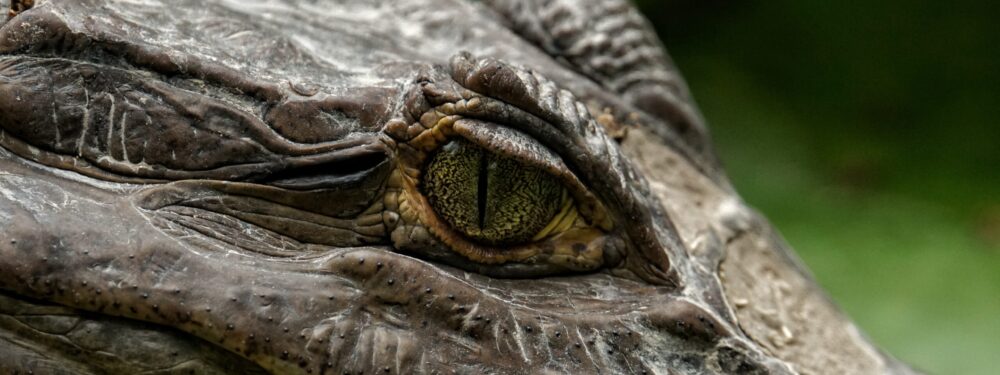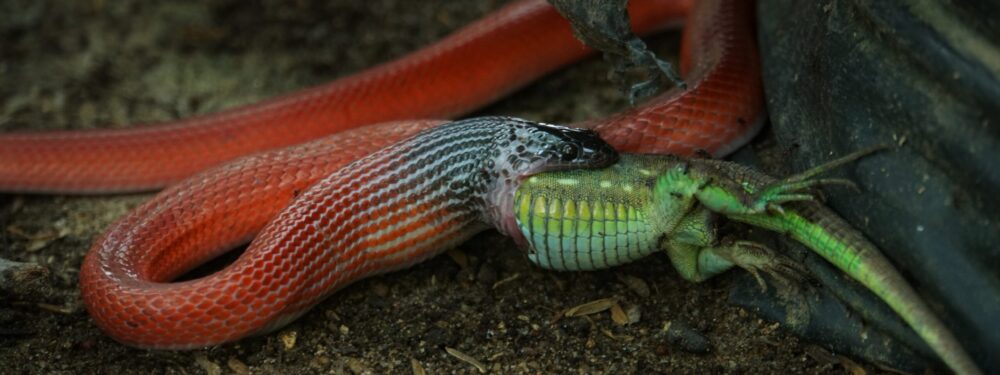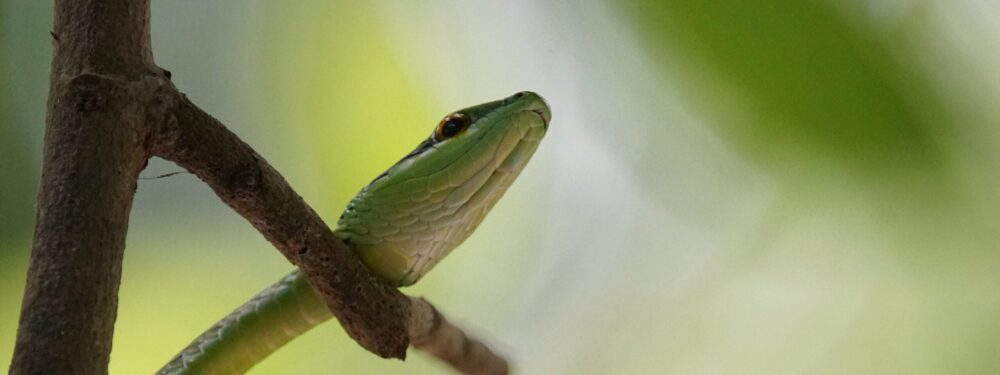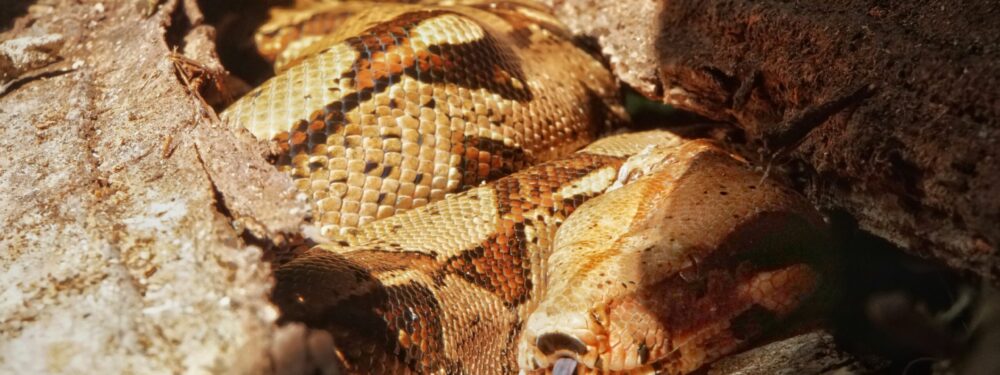The garden hosts an incredible and diverse number of species, not only of native plants but also animals. This is especially important because it serves as a refuge for wildlife that has been lost in areas with more urban development. The highly threatened ecosystem of the seasonally dry tropical forest is home to some very interesting species like the red howler monkey or the critically endangered cotton-top tamarin that live high in the canopy. This and other species visitors are likely to see are:
Mammals
Red howler monkey
The most abundant monkey in our Garden is the red howler monkey, Alouatta seniculus. Their call can be heard up to 5km away which makes them the loudest terrestrial animal in the world.
They can be observed in groups from 3 to 16 individuals that contain one or very few adult males, several adult females, and their offspring. Usually only the alpha male reproduces. With a visit to the garden, it is almost guaranteed to see them. Their mobile hands and feet and their prehensile tail helps them grasp and navigate high in the canopy.
Cotton-top tamarin
The cotton-top tamarin, Saguinus oedipus, is a small primate endemic to Colombia. Their habitat is restricted to the northwest of Colombia, ranging from the Atrato River in the west to the Magdalena River in the east. They are listed as critically endangered by the IUCN red list, leaving only 2,000-3,000 individuals in the wild. The garden has committed to their conservation reintroducing captured and confiscated individuals from illegal pet traded to the area. Their habitat range keeps decreasing due to urbanization and logging of their home forests.
Sloth
Bradypus variegatus better known as the brown-throated three-toed sloth can be seen in the treetops of the garden. They are known to be one of the slowest animals on earth and are well-adapted to the arboreal life. Sloths only eat 200 g of leaves and move about 30 m a day. Because of their nutrient-poor diet, they conserve energy by sleeping up to 18 hours and moving incredibly slow. Their slow movement is also a strategy to avoid being eaten; they blend with their environment also thanks to the algae growing on their fur.
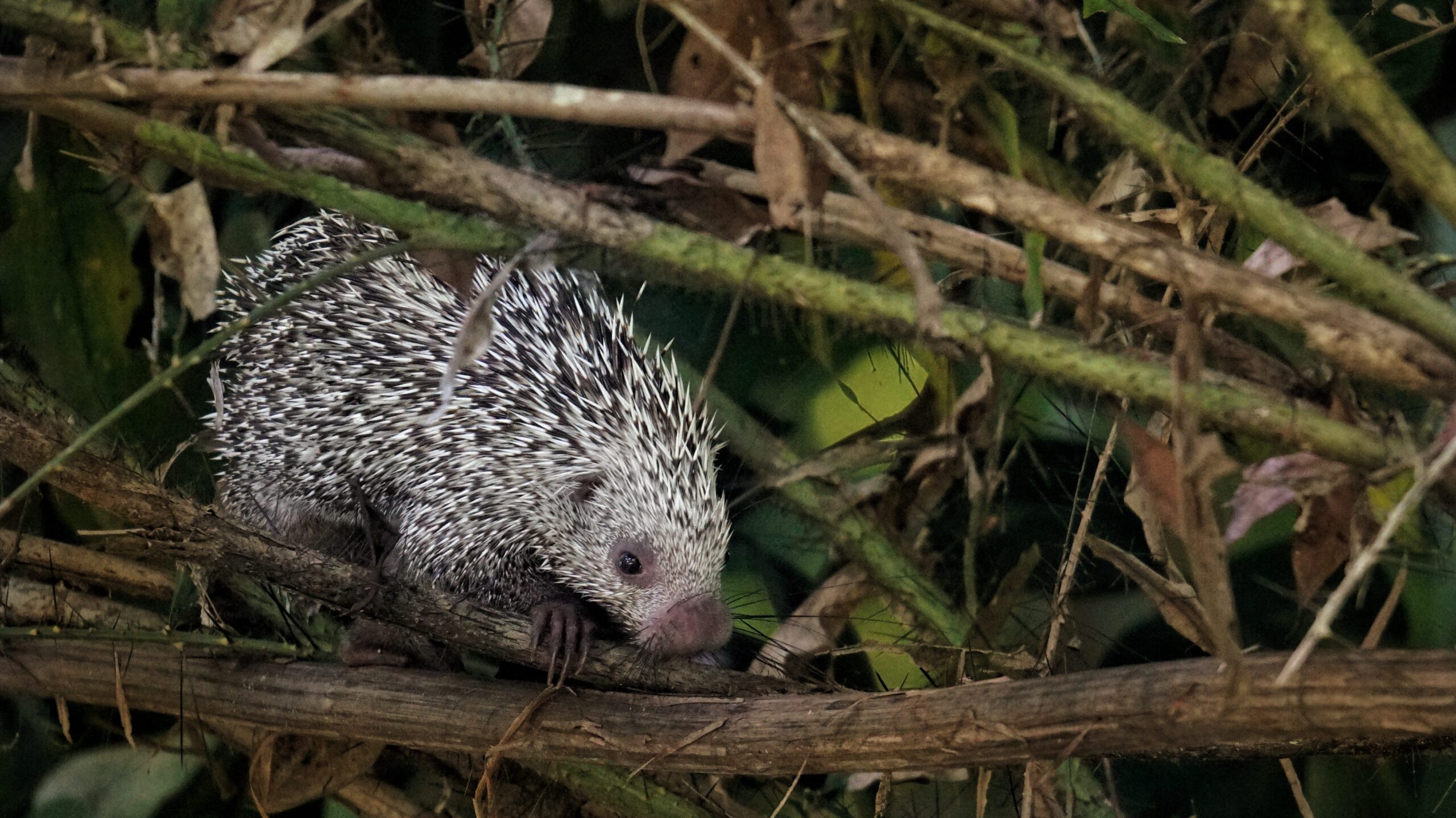
Porcupine
Coendou bicolor, or bicolored-spined porcupine are rodents coated with quills or spines that cover their body and shields them from predators. They are nocturnal and arboreal. Their tails are spineless and prehensile, meaning they can grab twigs and branches with it. Additionally, their perfectly modified feet make them an adept climber. Porcupines are born with brown-reddish hair which hardens and develop into their typical black and white quills. They are herbivores and mainly feed on bark, roots, fruit and leaves.
Reptiles
Caiman
The stealthy nocturnal hunter, the brown caiman, Caiman crocodilus fuscus, is commonly found in freshwater habitats around the Garden. They can be sighted during the day sunbathing on tree trunks or relaxing between water lilies, only showing their eyes and nose above the surface of the water. In many countries of South America, caimans have been overexploited for their skin to make purses or boots but still maintain a healthy population number which makes them highly adaptive.
Snakes
The garden is home to a vast variety of snakes, including constrictors, venomous vipers, corals and colubrid snakes.
The massive red-tailed boa, Boa constrictor, grows up to more than 4 m in length and can be found on the ground and in trees. They hunt by leaping on its prey, wrapping around them until they have no more air left to breathe. The lack of teeth to chew forces them to swallow their prey in one piece.
The Terciopelo, Bothrops asper, is the most dangerous snake for humans in our region. These pit vipers grow up to 2.5 m and are easily identified by their light to dark brown colors in zig-zag shaped lines on its back that are reminiscent to an “X”. Whenever possible they avoid humans but fight back when encountering intruders in their territories. Due to their temper and advanced camouflage, they are prone to be involved in accidents with humans.
There are two genera of coral snakes in the Americas, Micruroides and Micrurus, both can be found at the Garden. Individuals from these genera are very elusive and rarely seen during the day since they are nocturnal spending most of their time below leaf litter on the ground. Even though they are well-tempered they should be handled with the highest care because of their highly venomous poison.
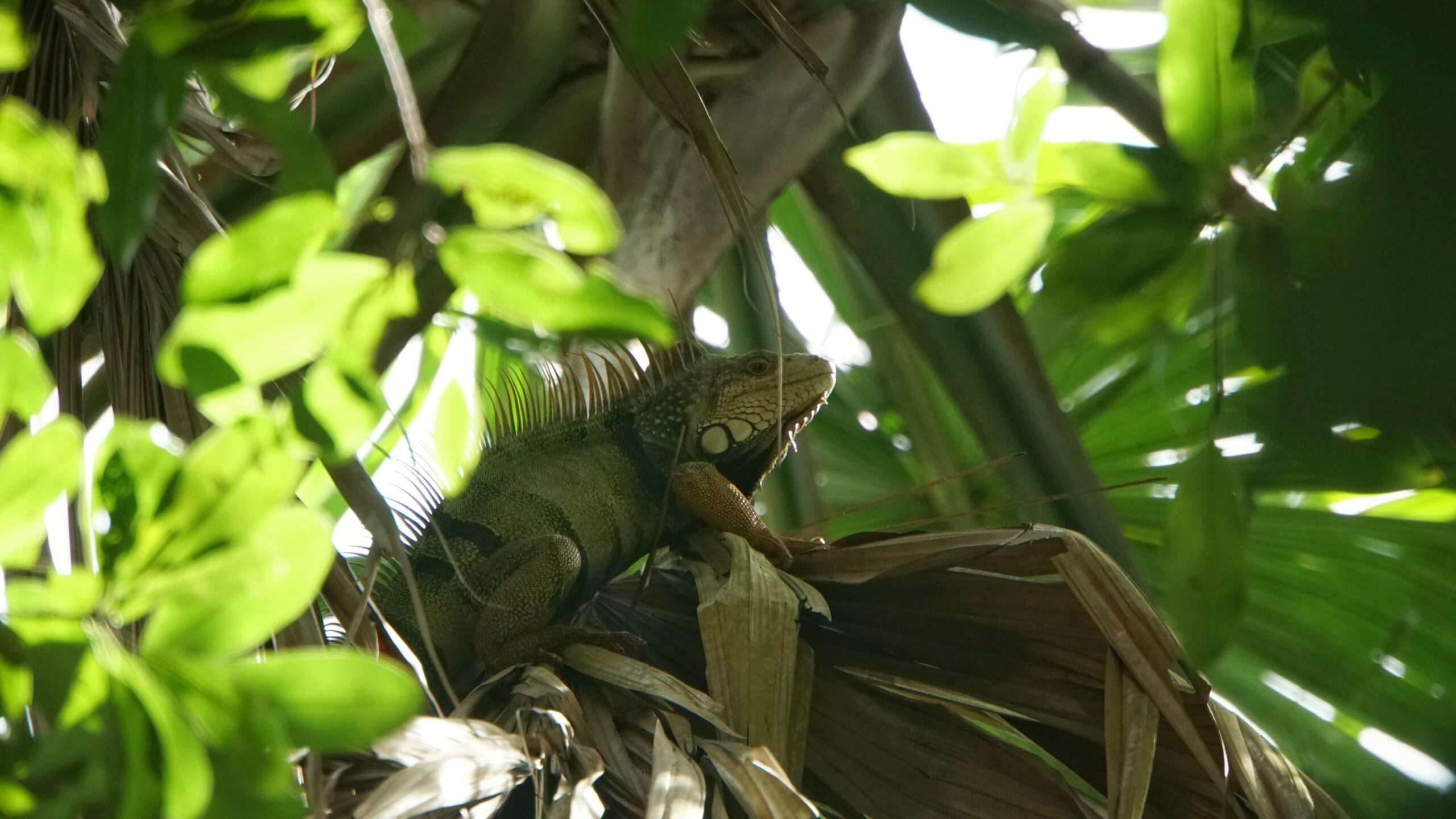
Iguana
One of the most seen animals in our garden and its surroundings are Iguanas, Iguana iguana. This large lizard is an herbivore, only consuming fruits and leaves; spending most of the day in trees in search of them. Just like other lizards, when they are caught by their tail, they can detach it to flee the situation. They will eventually grow a new tail. Sadly, iguanas are also hunted for their eggs and meat.

